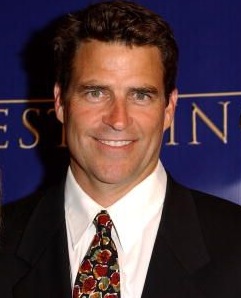We as a nation are spending a lot of money projecting our force overseas. Forces in Afghanistan, incursions into Pakistan - granted, the maguffin of killing off bin Laden is about worth the price of admission, but still - aid missions in Somalia and elsewhere.
How many American lives, how much American money, do we save if we simply keep our forces at home?
China has recently called us out for spending money we don't have. Fine, China, let's see you step up to the plate and do some lifesaving. Oops, the country whose dissidents simply disappear might not be as humanitarian as that. Oh well.
So the question I ask myself, the thought I sometimes think and feel ashamed for thinking it is, what if we just let them die?
What if we simply packed up all our soldiers overseas and brought them home? Gather up all the food shipments to aid projects in Somalia where there is no government, pull the US Navy out of the pirate-ridden waters of the western Indian Ocean, just pick up our ball and go home.
Deaths would skyrocket. Populations that are limping along from one US-subsidized meal to the next would just starve to death. Warlords in contested areas would become even bolder without having to worry about answering to the occasional Marine sniper. The pirates would have a free ocean.
But no more American soldiers would die. At the risk of sounding like an absolute monster, I'm going to come out and admit it: I don't care about those other countries. I don't care about the people who live there - I don't know any of them personally. I don't care about those other countries' governments. Pakistan was hiding bin Laden whether they knew it or not; they can be officially irritated by the incursion of American forces to go get him, but they should be damned embarrassed. Bin Laden
Somalia as a nation has come completely apart. There is no government. There is a sort of ersatz coast guard, but evidence strongly suggests the so-called Somali coast guard is also the pirate fleet. Not the pirate fleet exclusively, but some of the faces on both teams are the same. When a pirate is captured if he is turned over to any kind of Somali "authority" he gets released. There is no government structure in place to process criminals. What there is is a raft of gangs. The gangs don't prosecute the pirates, and the gangs steal the food aid shipments, doling them out as suits themselves.
Mohamed Siad Barre, murderous monster though he was, had laudable goals when he took over as Somalia's supreme dictator. Stamping out tribalism is a good thing. But he failed to achieve that; as soon as he died and the government collapsed, tribalism was right back again. And that's the downside of a dictator: as soon as the head dies, the government suffers a tremendous shock. I'm looking forward to Fidel Castro kicking the bucket, I bet Cuba lasts as a communist republic for no more than five years after that.
I've sometimes loudly wondered why we don't just nuke the entire Middle East to a flat plain of volcanic glass. So many of those people hate each other so much, I'm certain that there will never be a complete and lasting peace. The Pax Americana has only gone on 50 years and there are parts of the world that it just hasn't touched, can never touch. Rather than wait for that bad dog to go completely mad and hurt someone, why not just shoot it and have done? Nuke the whole region and get it over with. Yes, it's bad. Yes, it's unnecessarily harsh. But it has the added bonus of expedience and thoroughness.
Except not everybody in the Middle East hates everybody else there, or even us. We are on polite terms with Oman, for instance. Happily, Oman is one of the few countries still on speaking terms with Iran, so if there's need for diplomatic contact with Iran without anyone bringing guns, Oman can be the message bearer.
While there is officially no war on in Iraq, there are still factions within the country that continue to kidnap, murder and bomb the general populace. I have no idea what their goals are. One would think that it would be enough to simply live and let live.
Syria would like to shuffle off its government heads. Careful you don't find yourself going the way of Somalia, Syria.
One bright flash and it would all be over. Nothing left but fused soil and cockroaches. Whoever wants the oil fields can have them.
But by playing the part of the good guy - or trying to - the US plants seeds of doubt in the minds of populations. Their governments tell them the US is bad and decadent and Imperialist and lord knows what all else. But we send them a few thousand tons of rice and wheat - how bad can we be?
Working to eliminate very real threats, working to silence the voices of chaos and hate increases the overall safety of the entire world. People in power, people who hate the United States and what it is trying to maintain (a democratically governed, peaceful world) instigate, motivate and alienate. And that is simply intolerable.
You want Saddam Hussein gone? Okay. We do too. Guy's nothing but trouble. Since you can't seem to do it, we'll send a few thousand of our own best and brightest and hunt that rascal down for you.
Osama bin Laden got you down? We're pretty annoyed with him ourselves. Where's he hiding? What...? Pakistan? Really! Well, Pakistan was just sure he wasn't there...well, anyway, fire up the choppers and we'll take him out. Boom. No more bad guy. Who's next on the list?
Remove the rabblerousers, the hate preachers, and the general populace just wants to go about their lives with a minimum of fuss. Get rid of people like bin Laden and I reckon quite a few people have a moment to think about whether the Americans are such bad people.
I mean, all we want is to be left alone, too. Stop killing each other and we won't have to worry about how long before you guys all go completely crazy and start trying to kill us too. Then we wouldn't have to send troops and aid to your enemies and working to subvert your governments. We wouldn't have to, because we wouldn't care.
There wouldn't be anything to care about.






